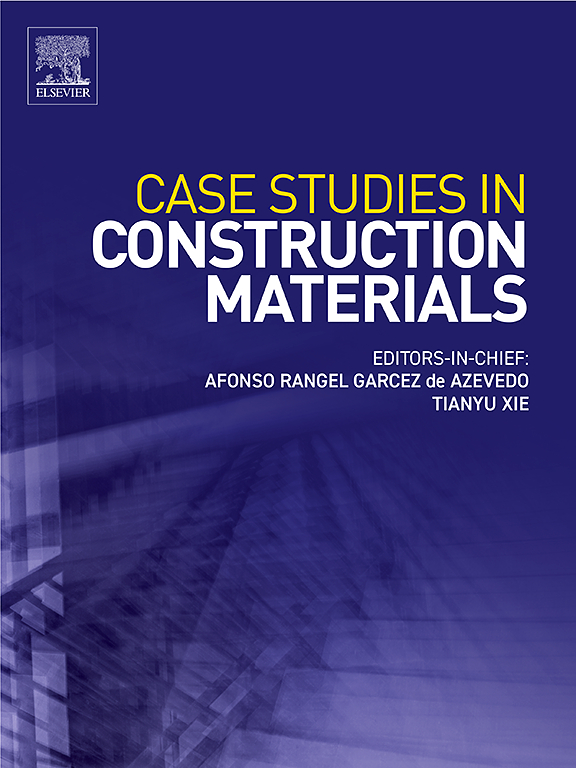再生粉质粘土浆料作为护渣调节剂的表征及改性机理:宏观、细观和微观多尺度分析
IF 6.5
2区 工程技术
Q1 CONSTRUCTION & BUILDING TECHNOLOGY
引用次数: 0
摘要
土压平衡盾构施工过程中产生的大量矿渣不仅处理成本高,而且加剧了环境污染。为提高盾构渣的利用率,提出添加粉质粘土代替膨润土作为护渣调理剂。首先,测试了膨润土和粉质粘土浆料的各种宏观性能。随后,通过红外光谱(IR)、扫描电镜(SEM)和Zeta电位测试,分别在微观、介观和宏观尺度上评价了含添加剂粉质粘土浆料的宏观性能与改性机理之间的关系。在此基础上,找出了不同浆料改性效果差异的原因。结果表明:粉质粘土中添加3 %碳酸钠能有效改善料浆的流变性能。碳酸钠的改性机理涉及到高岭石晶格层内水分子与内表面羟基之间形成氢键。该工艺显著提高了粉质粘土浆料的流变性能。此外,碳酸钠改变了粉质粘土颗粒之间的接触关系,增加了浆料的粘度,降低了浆料的渗透率。最后,碳酸钠增加了粉质粘土颗粒的双电层厚度。这使得颗粒可以结合更多的水分子,从而提高粉质粘土的制浆能力。本文提出了一种创新的粉质粘土改性过程的多尺度分析方法。用再生粉质粘土代替膨润土作为调渣剂,不仅大大降低了材料采购成本,而且大大降低了EPBS排放土壤的运输和处理费用。本文章由计算机程序翻译,如有差异,请以英文原文为准。
Characterization and modification mechanism of recycled silty clay slurry as a shield slag conditioner: Macroscopic, mesoscopic, and microscopic multiscale analysis
The large amount of slag generated during the construction of earth pressure balance shield (EPBS) not only incurs significant disposal costs, but also exacerbates environmental pollution. To improve the utilization of the shield slag, silty clay with additive is proposed as a slag conditioner instead of bentonite. Firstly, various macroscopic properties of the bentonite and silty clay slurries are tested. Subsequently, the relationships between the macroscopic properties of the silty clay slurries containing additives and the modification mechanism are evaluated at microscopic, mesoscopic, and macroscopic scales by using infrared spectroscopy (IR), scanning electron microscope (SEM), and Zeta potential tests, respectively. Based on these tests, reasons for variations in modification effects of different slurries are identified. The results show that addition of 3 % sodium carbonate to the silty clay can effectively improve the rheological properties of the slurry. The modification mechanism of sodium carbonate involves the formation of hydrogen bonds between water molecules and inner surface hydroxyl groups within the lattice layer of kaolinite. This process significantly enhances the rheological properties of the silty clay slurry. Furthermore, sodium carbonate alters the contact relationships between the silty clay particles, which increases viscosity and reduces permeability of the slurry. Finally, sodium carbonate increases thickness of the electrical double layer of the silty clay particles. This allows the particles to bind more water molecules, therefore improving slurry-making capacity of the silty clay. This paper presents an innovative multiscale analysis of the modification process of silty clay. The substitution of recycled silty clay for bentonite as a slag conditioner not only substantially reduces the cost of purchasing materials, but also considerably decreases the expenses associated with transportation and disposal of the soil discharged by EPBS.
求助全文
通过发布文献求助,成功后即可免费获取论文全文。
去求助
来源期刊

Case Studies in Construction Materials
Multiple-
CiteScore
7.60
自引率
19.40%
发文量
842
审稿时长
63 days
期刊介绍:
Case Studies in Construction Materials provides a forum for the rapid publication of short, structured Case Studies on construction materials. In addition, the journal also publishes related Short Communications, Full length research article and Comprehensive review papers (by invitation).
The journal will provide an essential compendium of case studies for practicing engineers, designers, researchers and other practitioners who are interested in all aspects construction materials. The journal will publish new and novel case studies, but will also provide a forum for the publication of high quality descriptions of classic construction material problems and solutions.
 求助内容:
求助内容: 应助结果提醒方式:
应助结果提醒方式:


